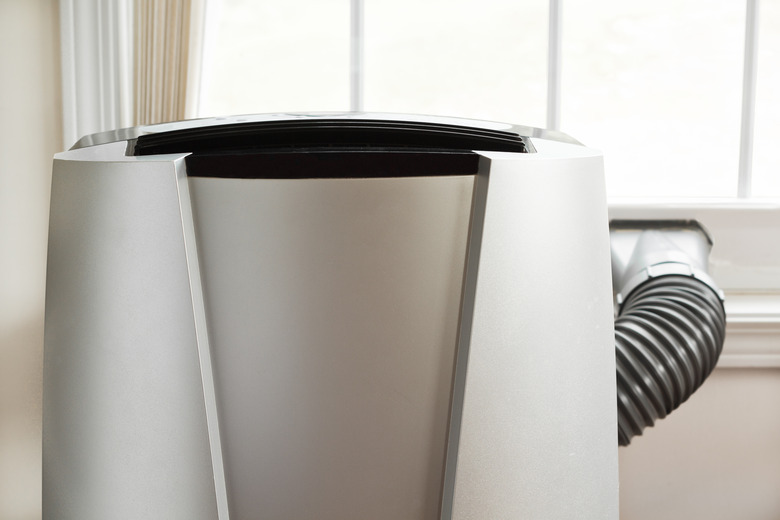How To Vent A Portable Air Conditioner On A Crank Window
We may receive a commission on purchases made from links.
Crank windows, technically called casement windows, can make it a little tricky to vent a portable air conditioner. It is possible to do it, however, and it's much easier than most people think. Many portable units come with a kit that you can modify and use for casement windows. If you prefer, you can also get creative and go with a DIY solution.
How to Install a Ventilation Kit
How to Install a Ventilation Kit
Most portable air conditioners come with a vent kit meant for traditional sash windows. In this case, a metal plate with a vent hookup is placed horizontally along the bottom of a window. You can still use this kit if you have a casement window, but you'll need to turn the plate on its side and install it vertically.
- Open the window as far as you can.
- Turn the metal vent plate on end and attach it to the screen frame with a few screws. Place the vent kit on whichever side of the window opens the farthest so you get the best ventilation possible. Don't install it on the hinged side of the window.
- Place the vent hood in the vent plate as indicated by the air conditioner's instructions and then hook the vent to the vent hood.
- Measure the remaining area of the window. When you have the measurements, cut a piece of stiff foam, thick cardboard, or plexiglass over the rest of the window, making sure it sits tight against the vent kit.
- Apply some caulk or weatherstripping around the vent kit and your makeshift window covering.
How to Install a Plexiglass Vent
How to Install a Plexiglass Vent
If desired, you can scrap the window ventilation kit altogether and build your own from plexiglass. Plexiglass is readily available at home improvement stores, but it's hard to cut. Fortunately, stores that sell it will also cut it down to the size and shape you need, saving you a lot of aggravation when you get home. Plexiglass is also clear, so your installation won't block the light.
- Measure the opening on your window. Grab your measurements and the vent cover you plan to use and head to the nearest home improvement store.
- Ask the store to cut a piece of plexiglass to the correct size for your window frame. Give it the vent hood too and ask it to cut a hole in the plexiglass that will accommodate the vent.
- Open your window.
- Install the vent hood in your plexiglass and then set the plexiglass in the window. If it doesn't fit as snugly as you would like, use weatherstripping or caulk to hold it in place.
- Connect the vent hose to the vent hood.
How to Vent With a Fabric Cover
How to Vent With a Fabric Cover
Some homeowners with casement windows use a special piece of fabric, sometimes called a bag, to vent their portable air conditioner. This is perhaps the easiest setup since it doesn't involve screws or caulk. The fabric cover makes for the fastest installation and removal as well.
- Open the window and remove the screen.
- Wash the frame of the casement window and then dry it. You need to clean the edge of the window frame that opens and the stationary part of the frame that sits adjacent to it when the window is closed.
- Remove the paper backing on one of the Velcro strips that came with your cover. Install it vertically on the edge of the open portion of the window. Smooth down the adhesive firmly along the window frame.
- Repeat this process with the other Velcro strip, applying it to the stationary portion of the window frame.
- Stretch the fabric between the two pieces of Velcro, firmly attaching it to the Velcro on both sides. Make sure the zipper on the fabric is facing you when you do.
- Open the zipper on the bag and insert your exhaust hose through the opening. Pull the zipper back down until it sits tightly against the vent hose.
- When you're not using the air conditioner, simply unzip the bag and take out the vent nose.
